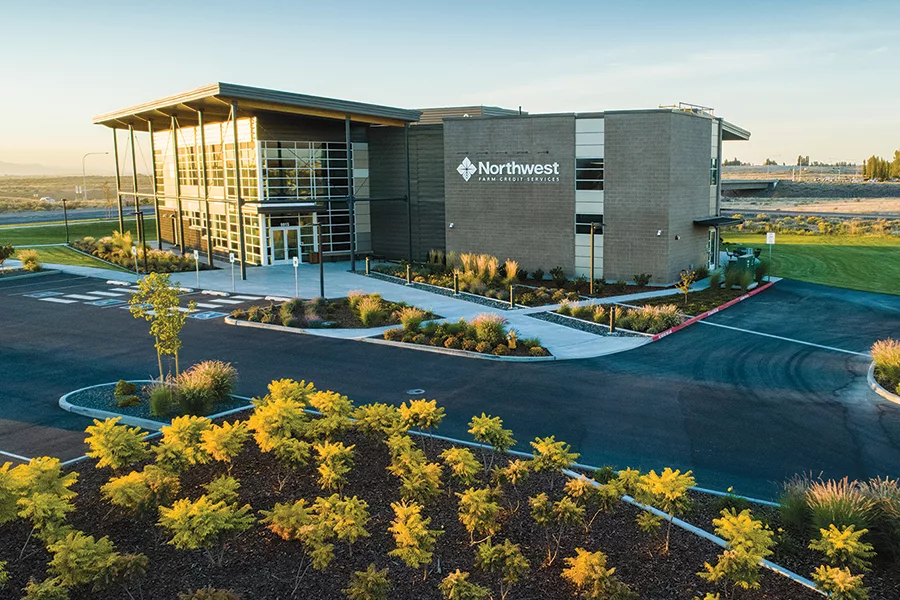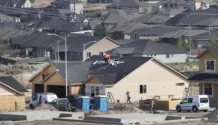
Home » Landscape architects see growing interest in Tri-City market
Landscape architects see growing interest in Tri-City market

January 11, 2023
As the Tri-Cities expands and reimagines itself in the wake of tremendous growth and an ongoing influx of new residents, new developments around the region are emerging more unique and dynamic in scope and design.
This is thanks in part to the work of landscape architects, which are increasingly in demand in the area.
Though in the Tri-Cities a licensed landscape architect must be hired to plan new commercial sites, it’s not a practice that’s on the radar of most people, said Tamra Lehuta, a Richland-based senior landscape architect with PLACE Landscape Architecture of Spokane.
“In the Inland Northwest, people are not as dialed into landscape architecture as they are in, say, the coastal areas, so things are much slower to evolve environmentally or to focus on art in the landscape or nonengineered solutions,” said Keith Dixon, principal at Architects West of Spokane.
He continued, “In the last 10 years, we have covered a lot of ground and had a lot more landscape architecture in the Inland Northwest.”
Tri-City newcomers from the East Coast and California are more familiar with landscape architecture because they may have used one for their home and they see the value, said Tom Sherry, president of SPVV Architects of Spokane.
“More people are learning what a landscape architect is and when they do their landscape, their neighbors notice,” Sherry said.
People often don’t realize the difference between layman landscape designer, educated landscape designer and landscape architect, Lehuta said.
“We don’t sell shrubs,” is one clarification Dixon wanted to make about the profession, a common misinterpretation by prospective clients.
To prospective customers, the biggest differentiator between the three categories is price, but more importantly, the real difference is training and expertise.
To become a licensed landscape architect requires a minimum of four years of higher education from a certified college, accumulated work experience in the field and the successful completion of a two-day, four-part test. Landscape architects pay for their license to be renewed annually in each state where they work and are required to routinely earn continuing education credits.
What’s the difference?
As opposed to traditional architects, whose focus is on buildings, interior spaces and mechanical systems, Sherry said landscape architects are all about the site, and many specialize in particular types of projects, such as senior citizen facilities, parks or schools.
“How the building sits on the site, the experience of the site – arrival, logical wayfinding, where’s the door? We make sure there isn’t that question and confusion. And then creation of outdoor spaces, for example, employee breakout spaces in an office park,” said Dixon. “Our best work marries the architecture and landscape architecture in a single solution so that all functions harmoniously. This extends to contacts with neighborhoods, the surrounding community and both manmade and natural environmental systems. The goal is to create something special that is treasured without realizing you’re treasuring it.”

Dixon said there is a lot of collaboration between landscape architects and adjacent professions, such as building architects, electrical engineers, mechanical engineers and civil engineers.
“We are all working together toward a shared vision,” Sherry said.
Lehuta said landscape architects have a unique role as they often act as representatives for their clients.
“Most of our projects are thinking in broader strokes and a lot of sociology and thought work enters into the equation,” she said, explaining that due to the scope of factors landscape architects take into consideration in their site designs, they are uniquely situated to help clients and their contractors navigate permitting, municipal code and determining whether other consultants are needed on a given project.
“Clients may not put in everything we design, but we plan it in such a way that we can do those things later on so they haven’t built themselves into a corner,” she said.
Trends to watch
Technology plays an important role in design evolution, even in exterior spaces.
Advances in plant breeding for specific microclimates is broadening what’s available to work with, especially in the local region. Sherry said over decades nurseries have developed plantings and trees more adapted to local climate conditions.
In addition to the blossoming of public arts in Tri-Cities, Sherry and Dixon similarly expressed that on a municipal level, the way cities are laid out is changing based on how people are moving through them.
Roadways previously designed to accommodate more cars are now finding an increased mix of users, from a variety of public transit vehicles to traditional and e-bikes to more foot traffic.
All agreed that demand for dynamic, multiuse year-round public outdoor spaces is on the rise, with clients wanting options for all visitors, including ADA-accessible play areas and other experiences.
Pickleball courts are another big trend in the Northwest, Sherry said.

These kinds of improvements are being seen across schools, retirement homes, hospice houses and medical facilities. Sensory gardens – like the one planned for Pasco’s third high school – geared toward students on the autism spectrum and healing gardens that facilitate faster recovery and rejuvenation are being intentionally integrated into design plans.
“The conversion and infill of a lot of urban areas is becoming a much bigger item. We have a lot of older landscapes and developments from 50, 70, 80 years ago that are falling apart and in need of conversion and investment. There’s certainly a need for that in Tri-Cities,” Dixon said.
Another major shift is in landscaping for environmental considerations.
“The outdoors became very important during Covid. Parks were open spaces and people realized how important they were,” Lehuta said. “The environment is a limited resource. People are starting to realize the value of it and planning in order to be more environmentally sensitive.”
She said this perspective is changing both on the commercial and residential levels. Residential clients are creating flexible outdoor living spaces that demand less water, complementing the surrounding natural environment.
“Folks are wanting less time behind the lawnmower and are becoming more conscientious of the resources they’re putting in – herbicides, fertilizer, gasoline,” Sherry said.
“Nationally, there’s a really big push on climate change … Even though we are, as landscape architects, the most environmentally oriented profession out there, there’s still a lot we need to do to reduce climate change through our designs and what we communicate to clients,” Dixon said.
“Things are changing,” he continued. “How we adapt to the landscape and our natural environments is going to be really important over the next couple decades … Codes and attitudes and the way we approach projects in general are going to evolve, need to evolve … (to) mitigate human developments and impact on the natural world and connect people more to that natural environment that we live in.”
Local News Architecture & Engineering
KEYWORDS january 2023





